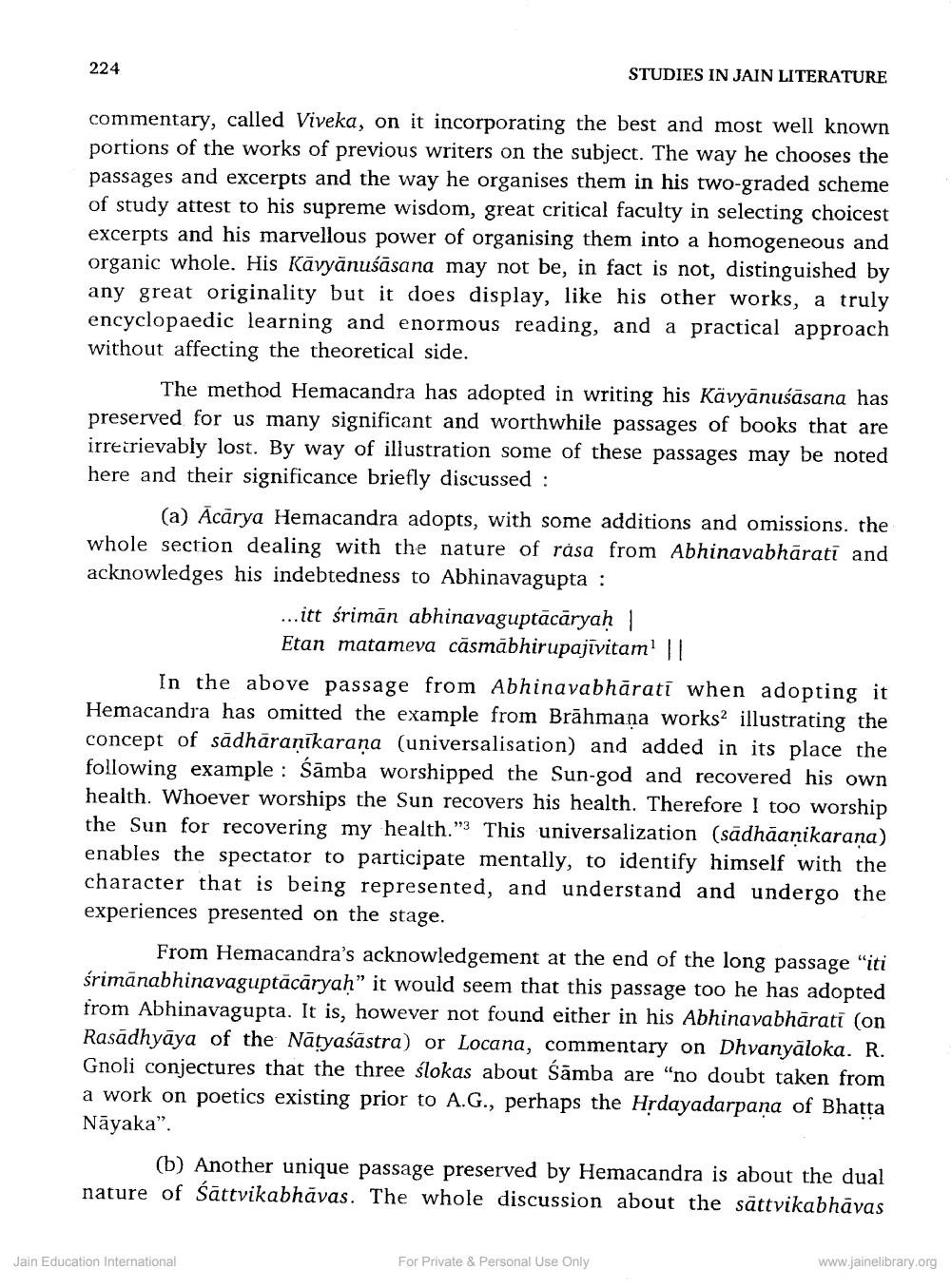________________ 224 STUDIES IN JAIN LITERATURE commentary, called Viveka, on it incorporating the best and most well known portions of the works of previous writers on the subject. The way he chooses the passages and excerpts and the way he organises them in his two-graded scheme of study attest to his supreme wisdom, great critical faculty in selecting choicest excerpts and his marvellous power of organising them into a homogeneous and organic whole. His Karyanusasana may not be, in fact is not, distinguished by any great originality but it does display, like his other works, a truly encyclopaedic learning and enormous reading, and a practical approach without affecting the theoretical side. The method Hemacandra has adopted in writing his Kavyanusasana has preserved for us many significant and worthwhile passages of books that are irretrievably lost. By way of illustration some of these passages may be noted here and their significance briefly discussed : (a) Acarya Hemacandra adopts, with some additions and omissions. the whole section dealing with the nature of rasa from Abhinavabharati and acknowledges his indebtedness to Abhinavagupta : ...itt sriman abhinavaguptacaryah 1 Etan matameva casmabhirupajivitam! || In the above passage from Abhinavabharati when adopting it Hemacandra has omitted the example from Brahmana works? illustrating the concept of sadharanikarana (universalisation) and added in its place the following example : Samba worshipped the Sun-god and recovered his own health. Whoever worships the Sun recovers his health. Therefore I too worship the Sun for recovering my health."3 This universalization (sadhaanikarana) enables the spectator to participate mentally, to identify himself with the character that is being represented, and understand and undergo the experiences presented on the stage. From Hemacandra's acknowledgement at the end of the long passage "iti srimanabhinavaguptacaryah" it would seem that this passage too he has adopted from Abhinavagupta. It is, however not found either in his Abhinavabharati (on Rasadhyaya of the Natyasastra) or Locana, commentary on Dhvanyaloka. R. Gnoli conjectures that the three slokas about Samba are "no doubt taken from a work on poetics existing prior to A.G., perhaps the Hrdayadarpana of Bhatta Nayaka", (b) Another unique passage preserved by Hemacandra is about the dual nature of sattvikabhavas. The whole discussion about the sattvikabhavas Jain Education International www.jainelibrary.org For Private & Personal Use Only




